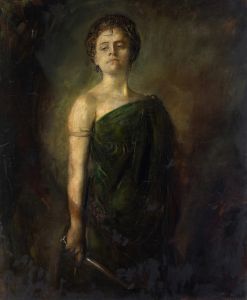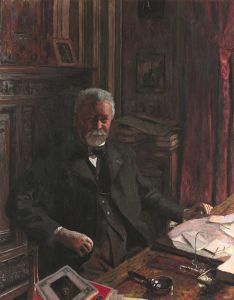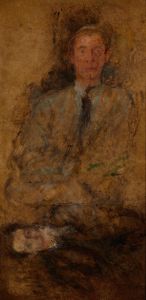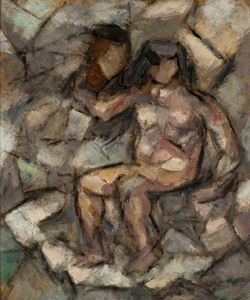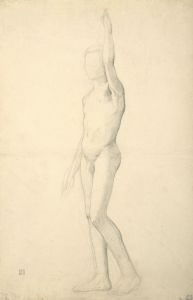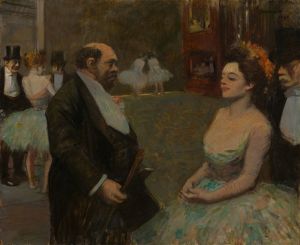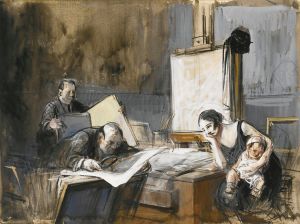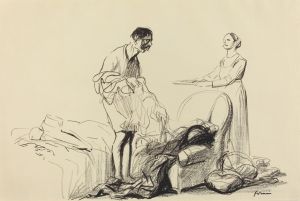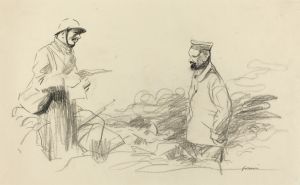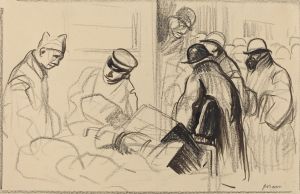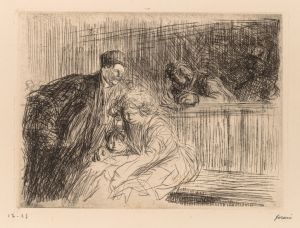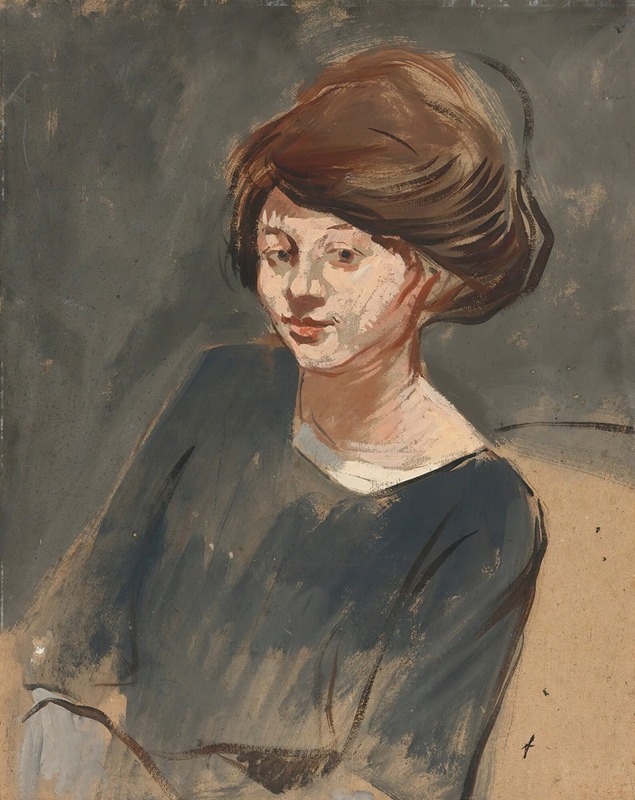
Portrait Of A Woman
A hand-painted replica of Jean-Louis Forain’s masterpiece Portrait Of A Woman, meticulously crafted by professional artists to capture the true essence of the original. Each piece is created with museum-quality canvas and rare mineral pigments, carefully painted by experienced artists with delicate brushstrokes and rich, layered colors to perfectly recreate the texture of the original artwork. Unlike machine-printed reproductions, this hand-painted version brings the painting to life, infused with the artist’s emotions and skill in every stroke. Whether for personal collection or home decoration, it instantly elevates the artistic atmosphere of any space.
Jean-Louis Forain was a prominent French Impressionist painter and printmaker, known for his keen observations of Parisian society in the late 19th and early 20th centuries. Born on October 23, 1852, in Reims, France, Forain moved to Paris at a young age, where he became associated with the Impressionist movement. He was influenced by the works of Edgar Degas, with whom he shared a close friendship, and his art often depicted scenes of everyday life, capturing the essence of the bustling city.
"Portrait of a Woman" is one of Forain's works that exemplifies his skill in portraiture and his ability to convey the subtleties of human expression and character. While specific details about this particular painting are scarce, it is consistent with Forain's broader body of work, which often focused on intimate and candid portrayals of individuals. His portraits are known for their loose brushwork and the ability to capture the fleeting moments of modern life, a hallmark of the Impressionist style.
Forain's approach to portraiture was influenced by his background as a caricaturist and illustrator. He worked for several Parisian journals, including "Le Figaro" and "Le Courrier Français," where he honed his ability to capture the essence of his subjects with quick, expressive lines. This experience translated into his paintings, where he often depicted his subjects with a sense of immediacy and vitality.
In "Portrait of a Woman," Forain likely employed his characteristic style, using a palette that favored muted tones and a composition that focused on the subject's face and expression. His portraits often reveal a psychological depth, suggesting the inner life of the sitter through subtle details and the interplay of light and shadow. Forain's ability to convey emotion and character through his brushwork is a testament to his skill as an artist and his deep understanding of human nature.
Throughout his career, Forain participated in several exhibitions, including the Impressionist exhibitions from 1879 to 1886. His work was well-received, and he became known for his depictions of Parisian life, including scenes from the theater, the courtroom, and the bustling streets of the city. Forain's art provides a window into the social dynamics of his time, reflecting both the vibrancy and the complexities of urban life.
Jean-Louis Forain continued to paint and exhibit his work until his death on July 11, 1931. His legacy as an artist is marked by his contributions to the Impressionist movement and his unique ability to capture the spirit of his era. While "Portrait of a Woman" may not be as widely recognized as some of his other works, it remains an example of Forain's talent in portraying the human condition with sensitivity and insight.





